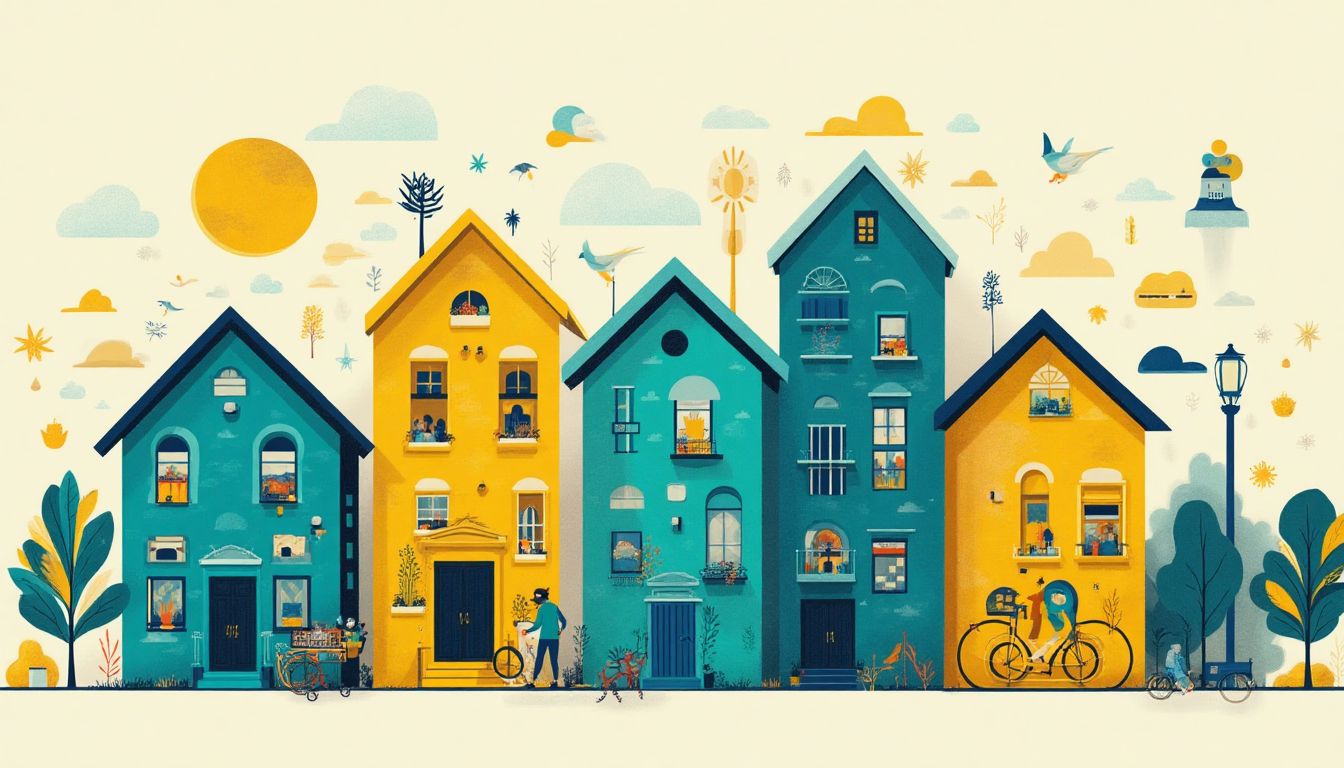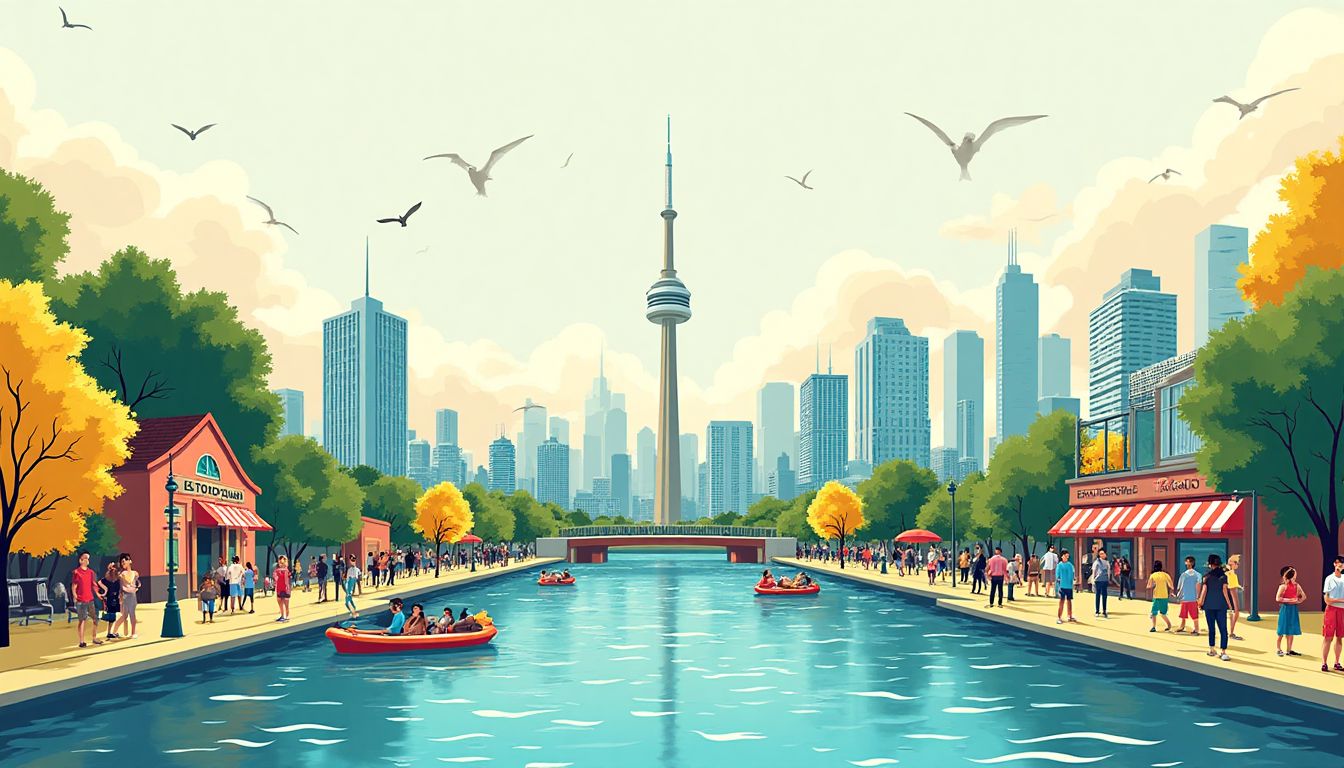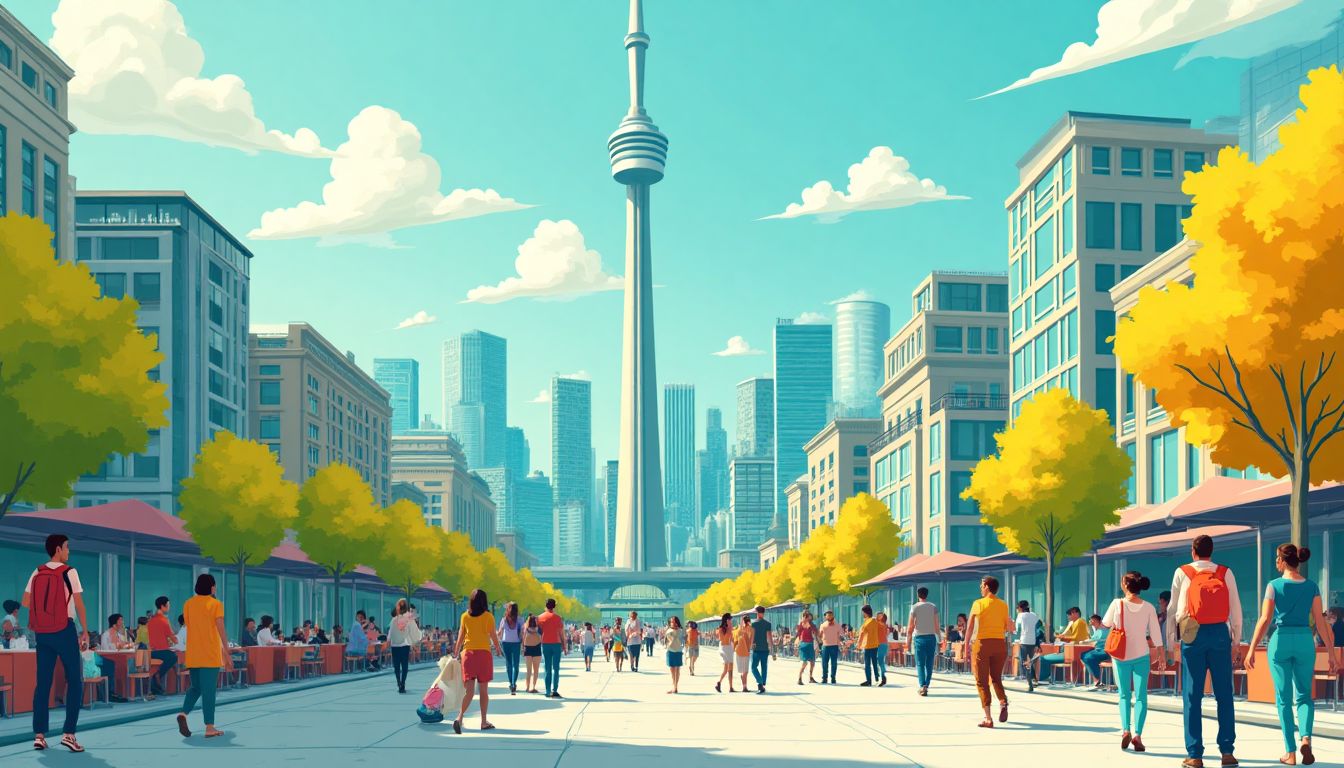Toronto, the bustling heart of Canada, is often hailed as a city of opportunity. But for the middle class, it’s increasingly becoming a city of contradictions. While the skyline grows taller, the dream of homeownership feels further out of reach. According to a Statistics Canada report, the middle class in Toronto is shrinking, with household incomes struggling to keep pace with skyrocketing living costs. Renowned economist Joseph Stiglitz once warned that the erosion of the middle class threatens the very fabric of society. Meanwhile, urban studies expert Richard Florida has highlighted how cities like Toronto are becoming playgrounds for the wealthy, leaving the middle class to navigate an increasingly precarious existence. Even Malcolm Gladwell, in his exploration of societal tipping points, has touched on how economic shifts can redefine entire communities. So, what does it mean to be middle class in Toronto today? And how can we ensure this vital group doesn’t just survive but thrives in the face of mounting challenges?
Defining the Middle Class in Toronto
When we talk about the middle class in Toronto, we’re talking about a group that’s as diverse as the city itself. Economically, it’s often defined by household incomes ranging from $60,000 to $150,000. But numbers only tell part of the story. The middle class is also about aspirations—owning a home, sending kids to good schools, and enjoying a comfortable lifestyle. In Toronto, however, these aspirations are increasingly under threat. According to a Canada Mortgage and Housing Corporation report, the average home price in Toronto has more than doubled in the past decade, making it one of the least affordable cities in North America. This has forced many middle-class families to rethink their dreams, opting for smaller homes or moving to the suburbs.
Lifestyle-wise, the middle class in Toronto is a mixed bag. On one hand, you have families enjoying the city’s vibrant cultural scene, from the Toronto International Film Festival to the bustling St. Lawrence Market. On the other hand, many are grappling with the high cost of living, from groceries to childcare. A City of Toronto study found that childcare costs in the city are among the highest in the country, eating up a significant portion of middle-class incomes.
Demographically, Toronto’s middle class is a reflection of the city’s multicultural fabric. Immigrants make up a significant portion of this group, bringing with them diverse skills and perspectives. However, they also face unique challenges, such as navigating a new job market and dealing with credential recognition. Generational differences also play a role. While older middle-class Torontonians may have benefited from a more stable job market and affordable housing, younger generations are finding it harder to achieve the same level of financial security. This generational divide is reshaping what it means to be middle class in Toronto, creating a complex and evolving identity.
Challenges Facing Toronto’s Middle Class
Housing Affordability
Let’s talk about Toronto’s housing market—where dreams of homeownership often crash into the harsh reality of million-dollar shoebox condos. The average price of a detached home in Toronto now hovers around $1.5 million, making it the most expensive city in Canada to buy property. Renters aren’t safe either: a one-bedroom apartment averages $2,500/month, forcing many to choose between avocado toast and, well, rent. The middle class is being squeezed out, with even dual-income households struggling to save for a down payment. And don’t get us started on bidding wars—where your life savings vanish faster than a Tim Hortons donut at an office meeting.
Cost of Living and Inflation
Groceries, utilities, childcare—Toronto’s middle class is getting nickel-and-dimed to death. A gallon of milk costs nearly $6, and don’t even peek at the organic aisle unless you’re ready to sell a kidney. Inflation has turned everyday staples into luxury items, while wages crawl along like a TTC streetcar in a snowstorm. Childcare? That’ll be $1,800/month, thanks to waitlists longer than Drake’s tour schedule. The middle class is running on a treadmill—working harder just to stay in place.
Job Market and Wage Stagnation
Remember when a stable 9-to-5 job with benefits was the middle-class golden ticket? Those days are fading faster than a Toronto summer. The gig economy—Uber, DoorDash, and freelance hustles—has replaced pensions with side gigs. Wages haven’t kept up with living costs, leaving many stuck in "perma-temp" roles. Even tech jobs, once a safe bet, are getting outsourced or automated. Meanwhile, CEOs rake in bonuses bigger than a Raptors playoff win. The middle class isn’t just stressed—it’s playing financial Jenga, praying the tower doesn’t collapse.
Opportunities for Toronto’s Middle Class
Education and Skill Development
Want to escape the rat race? Toronto’s got options. Institutions like George Brown College offer affordable certifications in high-demand fields (A.I., green energy, trades). Online platforms like Coursera provide courses from top universities for less than a week’s groceries. Upskill now, and you might just out-earn your old boss—or at least afford a backyard BBQ without a GoFundMe.
Entrepreneurship and Side Hustles
Toronto’s middle class is getting creative. From Etsy shops selling maple-leaf mittens to condo-dwellers launching TikTok marketing agencies, side hustles are the new safety net. The city’s Small Business Enterprise Centre offers grants and mentorship. Pro tip: That "useless" hobby? It might pay your hydro bill.
Community and Networking
Toronto’s secret weapon? Its people. Networking groups like BNI connect professionals, while local Facebook groups trade everything from job leads to free Ikea furniture. Volunteer at events like TIFF—you never know who’ll hand you a business card (or a free sandwich). In a city this big, your next opportunity might be a coffee chat away.
The Role of Government and Policy
Toronto’s middle class isn’t just shaped by market forces—government policies play a massive role in either propping it up or letting it crumble. Let’s break down where policy succeeds, where it fails, and what could turn things around.
Housing Policies
Toronto’s housing crisis is no secret. The average home price hovers around $1.1 million, pushing ownership out of reach for many middle-class families. Current policies, like the Ontario rent control guidelines and the Places to Grow Act, aim to stabilize the market, but critics argue they don’t go far enough. Here’s what could help:
- Expanded Rent-to-Own Programs: Partnering with developers to create pathways to ownership for renters.
- Vacant Home Taxes: Toronto’s Vacant Home Tax penalizes empty properties, but enforcement is spotty.
- Co-Op Housing Revival: Models like Toronto Community Housing could scale up with government backing.
Taxation and Financial Support
Taxes can either lift up the middle class or drain it dry. Ontario’s tax credits for childcare and education help, but loopholes favor the wealthy. Key fixes:
| Policy | Impact on Middle Class |
|---|---|
| Childcare subsidies | Reduces financial strain for families (e.g., Toronto’s subsidy program) |
| TFSA vs. RRSP rules | Middle-class families often miss out on optimal savings strategies |
| Property tax freezes | Benefits long-term homeowners but strains city services |
Economic Development
Toronto’s economy thrives on sectors like tech (Toronto Tech), finance, and film (Toronto Film Office), but middle-class jobs are shrinking. Solutions:
- Reskill Workers: Expand programs like Ontario’s Second Career to transition workers into high-growth fields.
- Small Business Grants: Boost local entrepreneurship through initiatives like Toronto’s Small Business Services.
- Infrastructure Jobs: Projects like the Ontario Line could create stable, middle-class jobs.
The Cultural Identity of Toronto’s Middle Class
Beyond dollars and cents, Toronto’s middle class is defined by its diversity, values, and daily struggles to balance work and life in a fast-moving city.
Diversity and Inclusion
Toronto is one of the most multicultural cities on Earth, and its middle class reflects that. But diversity isn’t just about demographics—it’s about equity. Challenges include:
- Wage Gaps: Racialized workers earn 12-28% less than white peers in similar roles.
- Access to Networks: Immigrant professionals often hit "the

AI Solutions: How AI Could Transform Toronto’s Middle Class
Artificial Intelligence (AI) isn’t just a buzzword. It’s a powerful tool that could reshape the future of Toronto’s middle class. From tackling housing affordability to improving job prospects, AI offers innovative solutions to the challenges faced by middle-class families. Here’s how:
Data Analysis for Informed Decision-Making
AI can analyze vast amounts of data on housing, income, and cost of living to identify trends and solutions. For instance, machine learning algorithms can predict which neighborhoods will face rising housing costs, allowing policymakers to intervene early. Companies like Palantir Technologies specialize in data analytics that could be adapted for urban planning in Toronto.
Personalized Financial Planning Tools
Budgeting apps powered by AI, such as Mint, can help middle-class families manage their finances more effectively. These tools analyze spending patterns, suggest savings strategies, and even offer tailored investment advice. Imagine a Torontonian using such an app to save for a down payment on a home—AI could make that dream achievable.
Job Matching and Career Growth
AI can revolutionize the job market by connecting workers with high-paying, stable jobs. Platforms like LinkedIn already use AI to recommend job openings, but deeper integration with local job markets in Toronto could bridge the gap between employers and skilled workers. AI-driven reskilling programs could also help middle-class workers transition into tech and other high-demand industries.
Policy Simulation and Impact Forecasting
What if governments could predict the impact of new policies before implementing them? AI can simulate the effects of housing subsidies, tax cuts, or childcare grants on Toronto’s middle class. Tools like KNIME enable data scientists to model complex scenarios, helping policymakers make informed decisions.
Community Building Through AI Platforms
AI-driven platforms can connect middle-class families with local resources, support networks, and events. For example, an app could recommend nearby community centers, job fairs, or affordable childcare options. Companies like Nextdoor are already fostering neighborhood connections, but integrating AI could take community building to the next level.
Action Schedule/Roadmap: AI Solutions in 2 Years
Day 1: Assemble a team of economists, data scientists, and policymakers. Partner with local institutions like the University of Toronto and tech firms such as Google Canada.
Week 1: Collect and analyze data on Toronto’s middle class, focusing on income, housing, and employment trends. Collaborate with Statistics Canada for accurate datasets.
Month 1: Develop AI tools for financial planning and job matching. Use open-source platforms like TensorFlow to build scalable solutions.
Month 3: Launch pilot programs in select Toronto neighborhoods, such as Scarborough and Etobicoke. Monitor outcomes using AI-driven analytics.
Year 1: Evaluate pilot programs and refine AI tools. Host workshops to gather feedback from middle-class families and local businesses.
Year 1.5: Partner with the City of Toronto to implement AI-driven policies, such as affordable housing initiatives and job training programs.
Year 2: Scale successful initiatives across Toronto. Share findings with other cities facing similar challenges, creating a global blueprint for middle-class support.
A Vision for Toronto’s Middle Class: Hope, Innovation, and Collaboration
Toronto’s middle class is at a crossroads. Rising costs, wage stagnation, and housing affordability issues threaten to erode the dreams of countless families. But amid these challenges lies an opportunity—a chance to harness the power of AI, innovation, and community to build a brighter future.
AI isn’t a silver bullet, but it’s a tool that can amplify human ingenuity. By analyzing data, predicting trends, and connecting people with resources, AI can help level the playing field for Toronto’s middle class. Imagine a city where families can afford homes, workers thrive in fulfilling careers, and communities flourish with diversity and inclusion. This isn’t a distant utopia—it’s a vision within reach.
However, technology alone isn’t enough. Solving the challenges facing Toronto’s middle class requires collaboration between individuals, governments, and the private sector. It demands bold policies, innovative solutions, and a shared commitment to equity and opportunity. From affordable housing initiatives to AI-driven job matching programs, the path forward is paved with creativity and determination.
Let’s not forget the cultural richness that defines Toronto’s middle class. This is a city where traditions from around the world converge, creating a tapestry of resilience and ambition. By embracing this diversity and leveraging the tools of the 21st century, we can ensure that Toronto remains a beacon of hope for the middle class.
As we look to the future, let’s ask ourselves: What kind of city do we want to build? How can we ensure that the next generation inherits a Toronto where dreams are achievable, and opportunities are abundant? The answers lie in our ability to innovate, collaborate, and act with urgency. Together, we can create a Toronto where the middle class not only survives but thrives.
What role will you play in shaping this future? How can we make Toronto a model for middle-class success worldwide? Share your thoughts, ideas, and dreams in the comments below. And don’t forget to subscribe to our newsletter to stay updated on the latest insights and initiatives. Welcome to the "Shining City on the Web"—let’s build it together.
FAQ
What income range defines the middle class in Toronto?
The middle class in Toronto typically includes households earning between $60,000 and $150,000 annually. This range can vary depending on family size, location, and lifestyle. For more insights into Toronto’s economic landscape, check out Toronto News and Local Insights.
How has housing affordability impacted Toronto’s middle class?
Rising housing costs have made it difficult for many middle-class families to afford homes, leading to financial strain. The average home price in Toronto is over $1 million, making homeownership a distant dream for many. Learn more about housing trends in Toronto Housing Market Updates.
What role can AI play in supporting the middle class?
AI can help with financial planning, job matching, and policy analysis to address middle-class challenges. For example, AI tools can:
- Analyze spending habits to create personalized budgets.
- Match job seekers with high-paying, stable opportunities.
- Simulate the impact of government policies on middle-class families.
Discover how AI is transforming industries in AI Technology Trends.
What government policies could help Toronto’s middle class?
Policies focused on affordable housing, tax relief, and job creation are key to supporting the middle class. For instance:
- Subsidies for first-time homebuyers.
- Tax credits for childcare and education expenses.
- Investments in infrastructure to create middle-class jobs.
Stay updated on local policies at Toronto Policy Updates.
How can individuals improve their middle-class status?
Investing in education, starting side hustles, and building professional networks can help individuals thrive. Here are some actionable steps:
- Enroll in affordable training programs or certifications.
- Start a small business or freelance gig.
- Join local community groups or professional networks.
For more tips, visit Career Growth Tips.
What are the biggest challenges for Toronto’s middle class?
The biggest challenges include:
- Skyrocketing housing costs.
- Rising inflation and cost of living.
- Wage stagnation and job market shifts.
Explore these issues in depth at Toronto Economic Challenges.
How does Toronto’s diversity shape its middle class?
Toronto’s multiculturalism enriches its middle class by bringing diverse perspectives and opportunities. However, it also presents challenges like cultural integration and access to resources. Learn more about Toronto’s diversity at Toronto’s Cultural Landscape.
What are some success stories of middle-class entrepreneurs in Toronto?
Many middle-class Torontonians have found success through entrepreneurship. For example, Shopify has empowered countless small business owners in the city. Read inspiring stories at Entrepreneur Success Stories.
How can AI tools help with financial planning?
AI tools can analyze spending habits, predict future expenses, and suggest ways to save money. For instance, apps like Mint use AI to create personalized budgets. Discover more at AI Financial Tools.
What is the future of Toronto’s middle class?
The future depends on addressing challenges like housing affordability and wage stagnation while leveraging opportunities in education, entrepreneurship, and technology. Stay informed at Toronto’s Future Outlook.
Wait! There's more...check out our gripping short story that continues the journey: Together, we can change the story
Disclaimer: This article may contain affiliate links. If you click on these links and make a purchase, we may receive a commission at no additional cost to you. Our recommendations and reviews are always independent and objective, aiming to provide you with the best information and resources.
Get Exclusive Stories, Photos, Art & Offers - Subscribe Today!




























Post Comment
You must be logged in to post a comment.